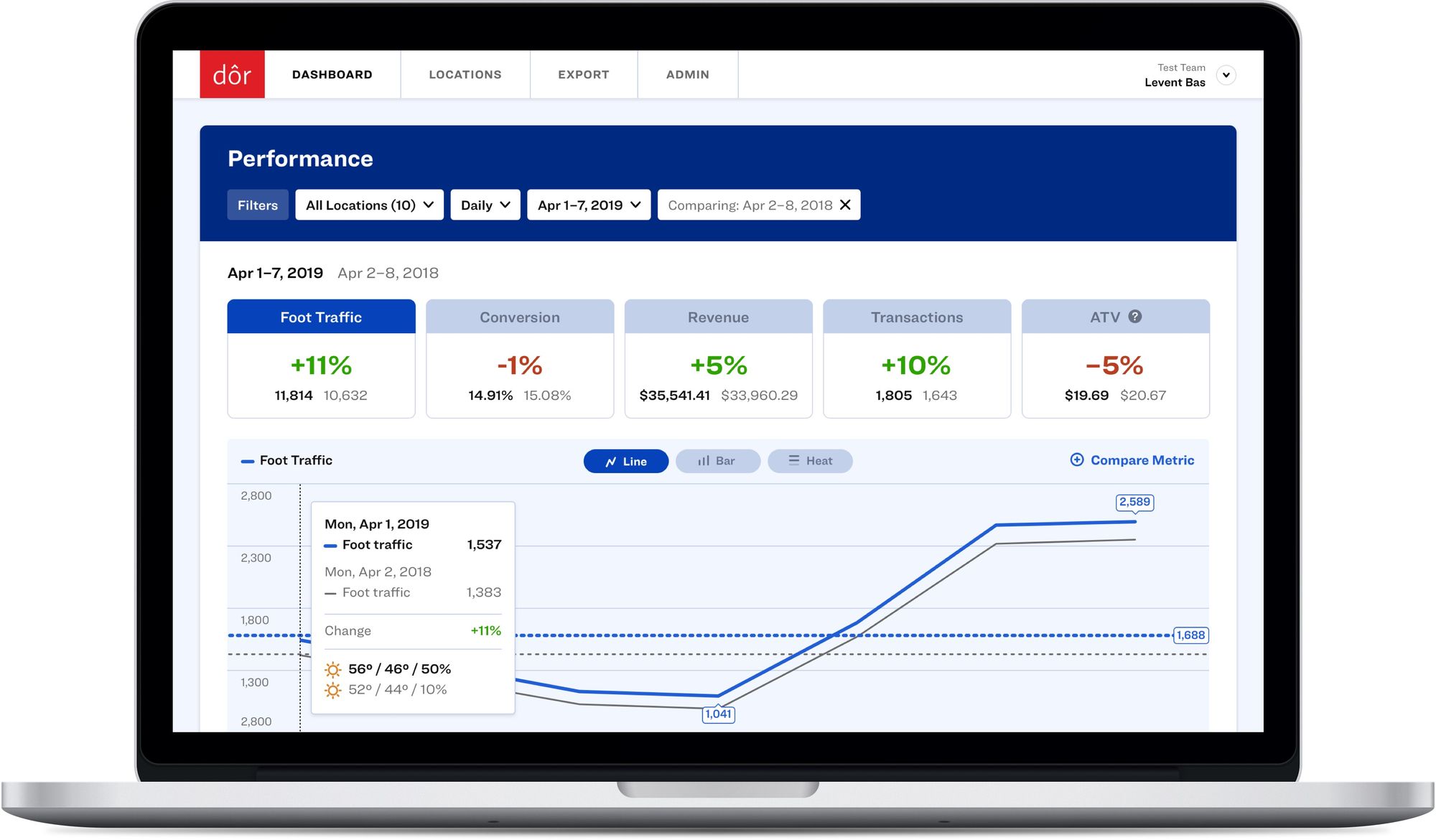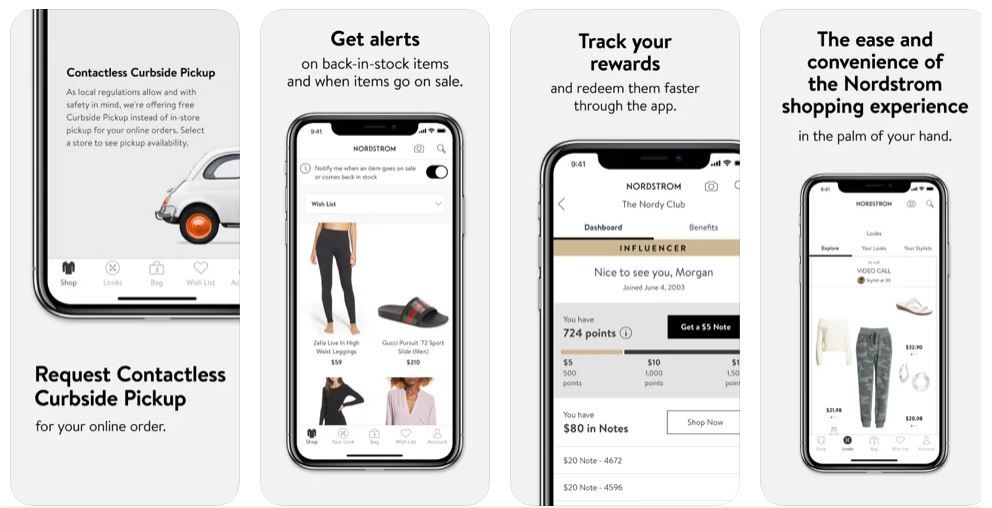The retail industry had a hard hit during 2020, which came in the form of a pandemic. Many retailers had to close down stores, lay off employees and had to find new ways to sell their products. Some didn’t even have their online stores ready, so they even had to be more creative in how and where they sell.
The quest for these alternative channels had been foreseen by other retailers years ago, when they transformed their business strategy to omnichannel retailing.
Omnichannel retailing is having multiple channels to sell your products, such as your physical store, website, mobile app, or social media channels, and it’s the business of knowing where to be when your customer wants to shop. Convenience is the key for today’s customers, and omnichannel retail is what makes this possible.

Did you know that a 1% increase in your store’s conversion rate can mean a 10% increase in revenue?
Click here to discover how Dor can help you understand your foot traffic data and make more profitable business decisions.
Ready to purchase? Complete your purchase in just minutes!
What is omnichannel retail?
Omnichannel retail is a converged type of retail where the customers can shop anywhere they want, whether it's a physical store, a desktop browser, a mobile app, or an intelligent kiosk. The omnichannel approach builds on a seamless customer experience. Unlike traditional retail, where the store is the center of commerce, omnichannel retail puts customers in the center.
What is the difference between omnichannel and multichannel retail?
As said, in omnichannel retail, customer view is the key. When the customer is shopping from an omnichannel store on any platform, s/he is registered under their own customer ID, where they can track their previous purchases, or the retailer has a history of his customers’ overall purchasing history. However, in multichannel retail, the retailer has independent platforms, so there is no seamless customer experience or single customer view.
An example would be as such: The customer is shopping from Nordstrom in 6th Avenue NYC. Recently she saw a handmade bamboo towel on Nordstrom’s Instagram account, clicked on the website, and added the item to her shopping bag. She goes to the register at the NYC store, tells the staff that she has an item on her shopping bag at nordstrom.com, and asks them where she can find it. The staff helps her to locate the products, she buys them from the store, and it’s immediately recorded under her profile at nordstorm.com. That’s just one example of omnichannel retail.
To get the cherry on top of the cake, Nordstorm can then suggest a discount at Nordstrom Spa in Garden City, New York, as an omnichannel marketing initiative.
On the other hand, Nordstorm would still sell on multiple platforms without this integrated customer view, such as stores, online, and apps. However, it would be considered as a multi-channel experience rather than an Omni one.

Why should retailers have an omnichannel strategy?
Omnichannel strategy is the retailers’ response to technological developments that are led by telecommunication and technology companies. The boundaries between technology and retail are diminishing daily and responding to the pace. Thus, customers are more valuable than ever.
Small and medium-sized businesses may not require these technologies immediately; however, knowing that there will be a customer demand in the future may help your business to prepare ahead. For example, you may not have a mobile app for online payments, but you may use a simple system to see which location your customer is shopping from, so you can offer local promotions to them.
Omnichannel retail, in general, has a positive effect on business continuity as it...
- Improves customer retention rate,
- Increases lifetime value of the customer,
- Has a positive effect on word of mouth and public relations,
- Protects the retailer against crisis. - this is an important lesson learned during Covid. The retailers who were more prepared for switching their channels experienced less trouble when all stores were closed in the States.
5 things to know to start your omnichannel operation
Technology
Technology is the key to develop omnichannel retail channels. Whether it's based on your ERP system or your basic accounting software, the technology should be fit to answer the type of process flow you’d like to set your retail management on. Of course, you may have to invest in a website, a mobile app, or a mobile kiosk as well.
However, if you can manage your financials thoroughly, these investments have a higher return value.

Logistics and inventory
When focusing on omnichannel retailing, you have to make sure that your inventory management system responds to this strategy. Remember that you will be managing multiple warehouses now, offline and online, but they have to be integrated seamlessly to avoid any mistakes.
Related: Inventory Turnover Ratio in Retail: How to Calculate and Improve It
Customer relationship management

As mentioned, a single view of the customer is essential in omnichannel management. The platform you are using for customer relationship management should address the customer's needs no matter where their point of contact is.
For example, a retail store customer can send an inquiry through your website asking about a refund. The CRM system you are using should be able to gather this information rapidly and reply to the customer on time.
Marketing
With additional channels to sell, additional marketing efforts can be practical. You will have more platforms to reach your customers. Even if they are not visiting your stores right now, you can send them an SMS or an email or drop a leaflet to their backyards and invite them to shop from your online store.
Or, if you are an online-only retailer, who has recently launched its physical retail store, you can invite them to your location just to see your products in real life,
Financial
Even though the technology and additional channels look challenging and expensive, the omnichannel effort is a great cash flow and profit builder if managed carefully. You’ll keep the costs you spend to run your physical business, however with single customer view integration, now you can reach your customers -and even prospective customers- through alternative channels and still make them buy from you. If you add your total sales to your retail calculations, such as revenue per meter square, you’ll see an increase in spending per customer.
The integrated system that you will be using to connect these data points will help you improve customer service, inventory management, promotional calendar and result in a more profitable and sustainable business for the long run.